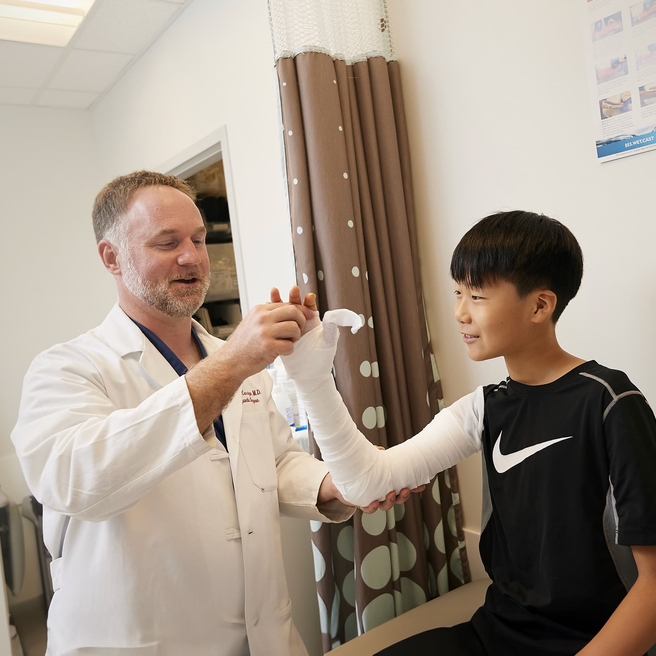What are growth-plate injuries?
While children and adults can both injure their bones, children are at risk for an additional type of musculoskeletal injury: growth-plate injuries.
Growth plate injuries are as their name describes — injuries at the growth plate (or growth center) where tissue develops near the end of long bones in children and adolescents.
Until your child reaches skeletal maturity, each long bone in her body has at least two growth (epiphyseal plates) — one at each end. When growing is finished sometime during adolescence, the growth plate is replaced by solid bone.
The growth plate is the weakest part of your child's growing skeleton. It is weaker than nearby ligaments and tendons that connect bones to other bones and muscles. Because of this weakness, injuries frequently happen in the growth plate of children and adolescents.
An injury that would cause a sprain in an adult is more likely to cause a bone fracture in a child. As many as one-third of all childhood fractures are growth-plate injuries.
Growth-plate injuries are twice as likely to occur in boys than in girls. Girls' bodies mature earlier than boys' bodies, so their growth plates are replaced by stronger bone at an earlier age.
Growth plate fractures most often occur in these bones:
- Thighbone (femur)
- Lower bones of the leg (tibia and fibula)
- Outer bone of the forearm (radius), at the wrist
- Ankle, foot or hip bone
- Long bones of the fingers (phalanges)
Causes
Most growth plate injuries in children result from:
- A fall, usually while running or playing
- Competitive sports, such as football, basketball, baseball and softball, track and gymnastics
- Recreational activities, such as biking, sledding, skiing, skateboarding and roller blading
Testing and diagnosis
At Children's Hospital of Philadelphia (CHOP), growth-plate injuries are assessed by physicians in the Orthopedic Center or Sports Medicine and Performance Center who specialize in diagnosing and treating musculoskeletal injuries in children, teens and young adults.
World-renown orthopedic experts will examine your child, assess your child's pain, learn about your child's medical history and perform diagnostic imaging to better understand the problem.
In most cases, an X-ray will show us cause of the injury. In some cases, we may perform additional imaging that may include: computerized tomography (CT scan), magnetic resonance imaging (MRI), EOS imaging, and bone scan.
Treatments
Your child's treatment will depend on the severity of her growth-plate injury. In most cases when a fracture is found, our team will cast or splint the affected bone or joint.
In about 10 percent of cases, an orthopedic physician will need to return the bones or joints to the correct positions. This may be done by hand manipulation or through surgery. After your child's bone position is corrected, the bone will be casted to allow it time to heal without movement.
Our casting experts will enclose the fractured growth plate and the joints on both sides of it. Casts need to remain in place from several weeks up to several months.
Follow-up care
After any growth-plate injury, your child should receive follow-up care from her pediatrician or orthopedic specialist. They can ensure your child's injury is healing properly and spot any issues that need further testing or treatment.
Resources to help
Orthopedic Center Resources
We have created resources to help you find answers to your questions and feel more confident in the care you are providing your child.
